I’m exploring the touring possibilities of a folding bike plus inflatable boat. The bike can carry the deflated boat; and the boat can carry the folded bike. Which enables amphibious linear journeys: you don’t have to paddle back to where you left the bike (or car, not that I can be bothered with cars). You can keep going, self-contained, across dry land or wet water.
MAP
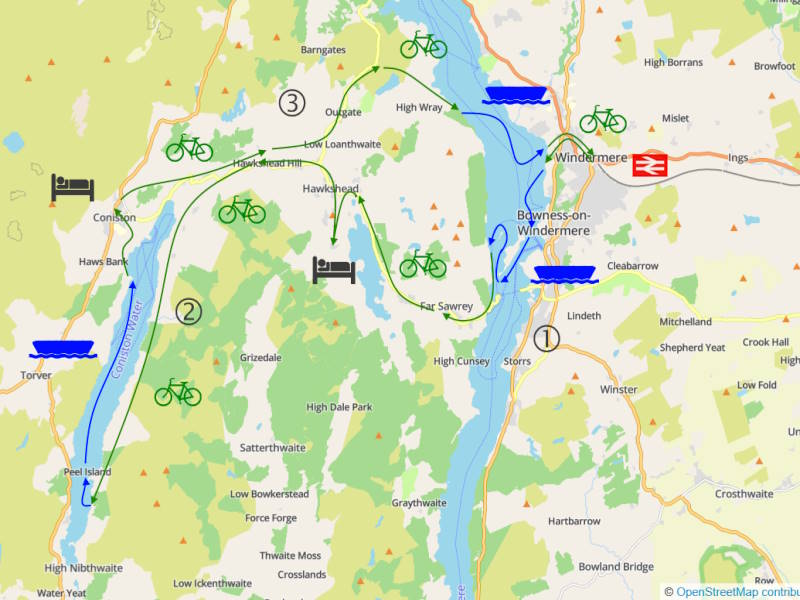
I’ve just come back from a three-day trip across Lake District hills, dales and meres, based further on three important factors. (1) It was sunny and hot. (2) I could get to Windermere by train free from my home in York, thanks to a Northern Trains Delay Repay complimentary ticket. And (3) YHA hostels in Hawkshead and Coniston were on special offer at just £12 a night. Even with food, drink and a beer or two, the whole thing cost under £60.
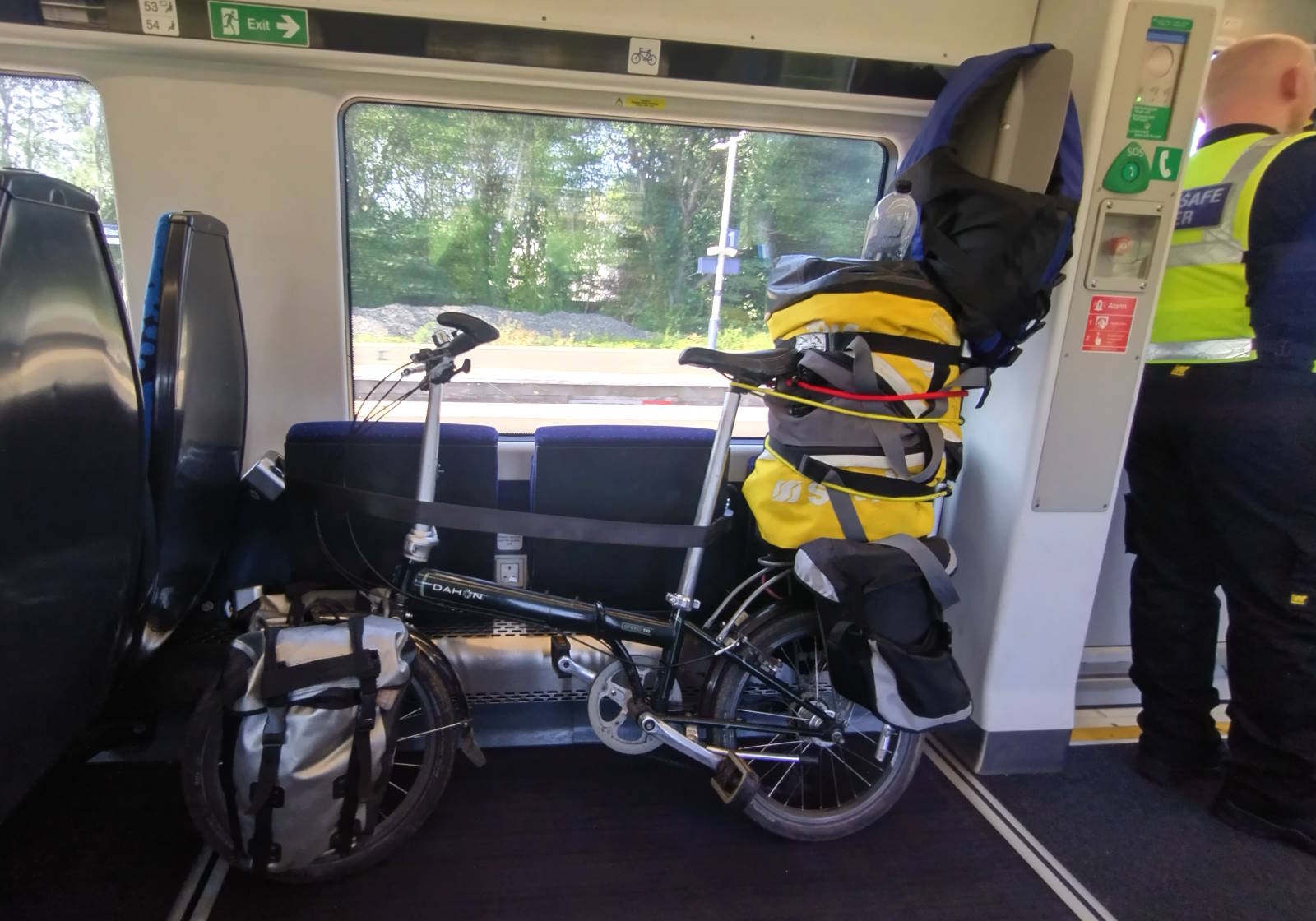
On Day 1 I rolled up at Windermere station in the late morning with my well-stacked folding bike. Don’t worry, it’s much more stable than it looks. Though, granted, it looks about as stable as an atom of uranium-235.
The precarious-looking blue thing at the top (on the paddle blades) is the life jacket, by the way. It’s light, by definition.
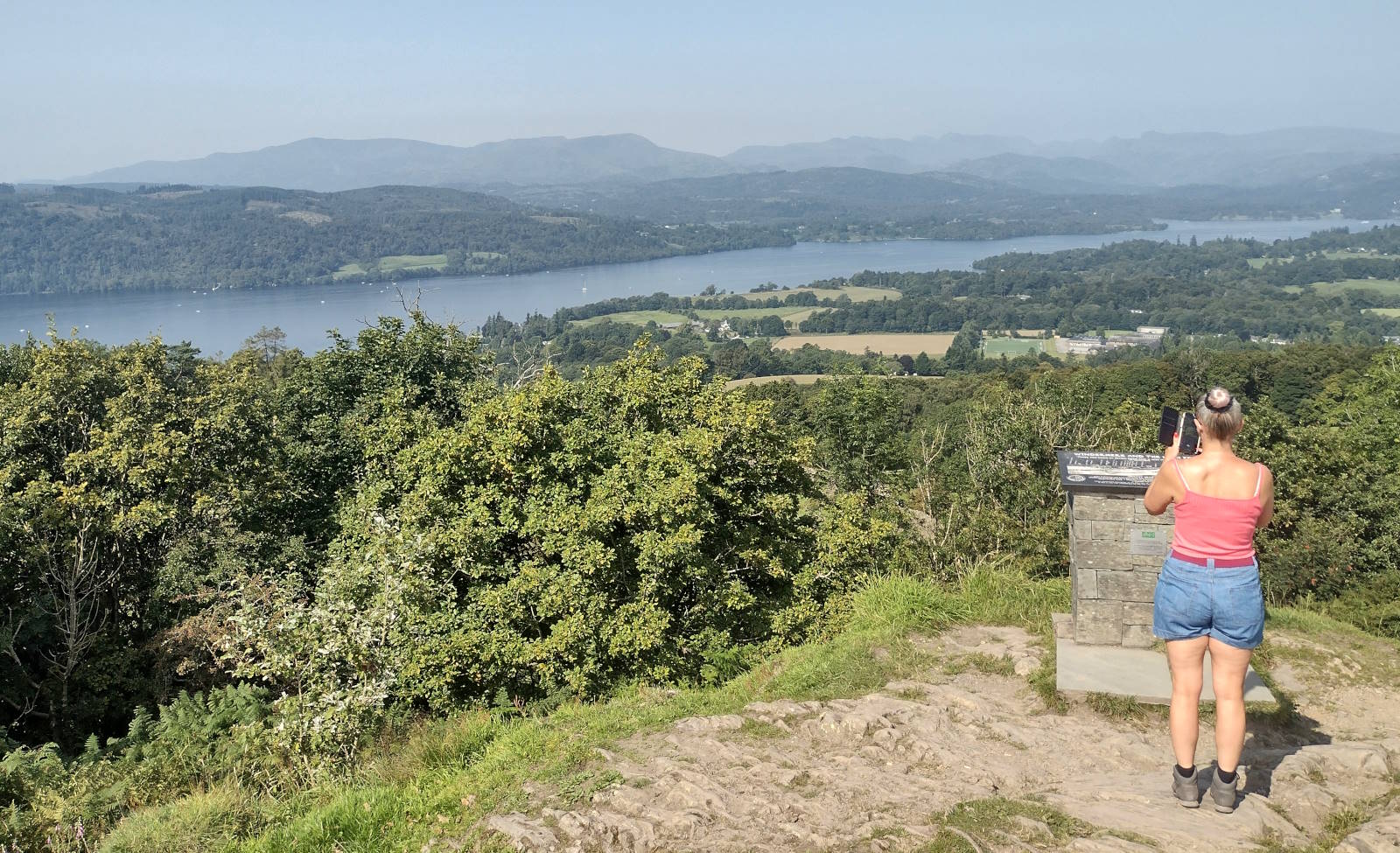
Actually, the tall seatpost of the folder – my oldish Dahon Speed TR – works better than a conventional size bike, giving something vertical to bungee the boat – a Sevylor Colorado – to.
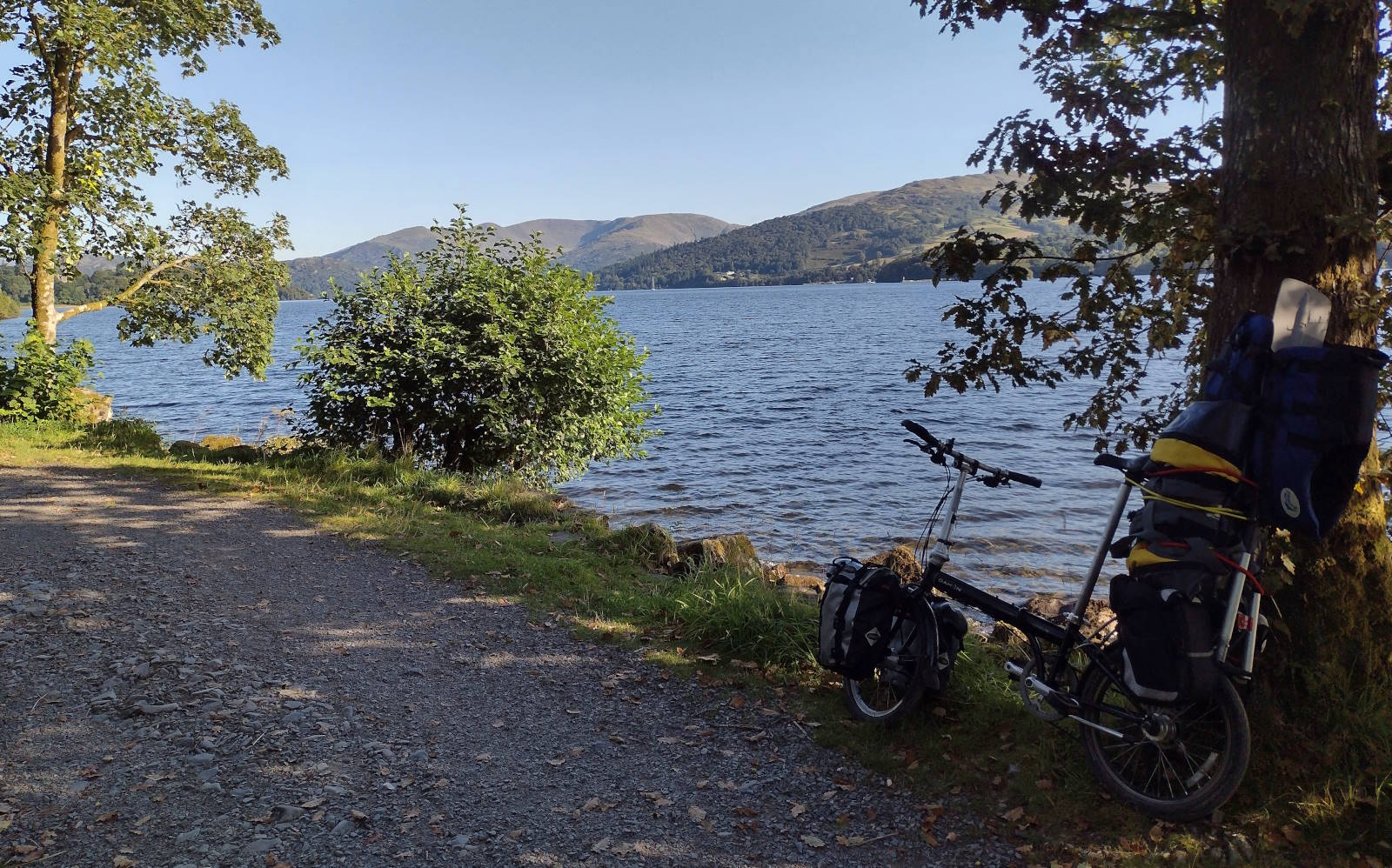
I coasted down to a stretch of Windermere’s shoreline publicly accessible for boaters (as detailed helpfully on the Lake District .gov.uk website).
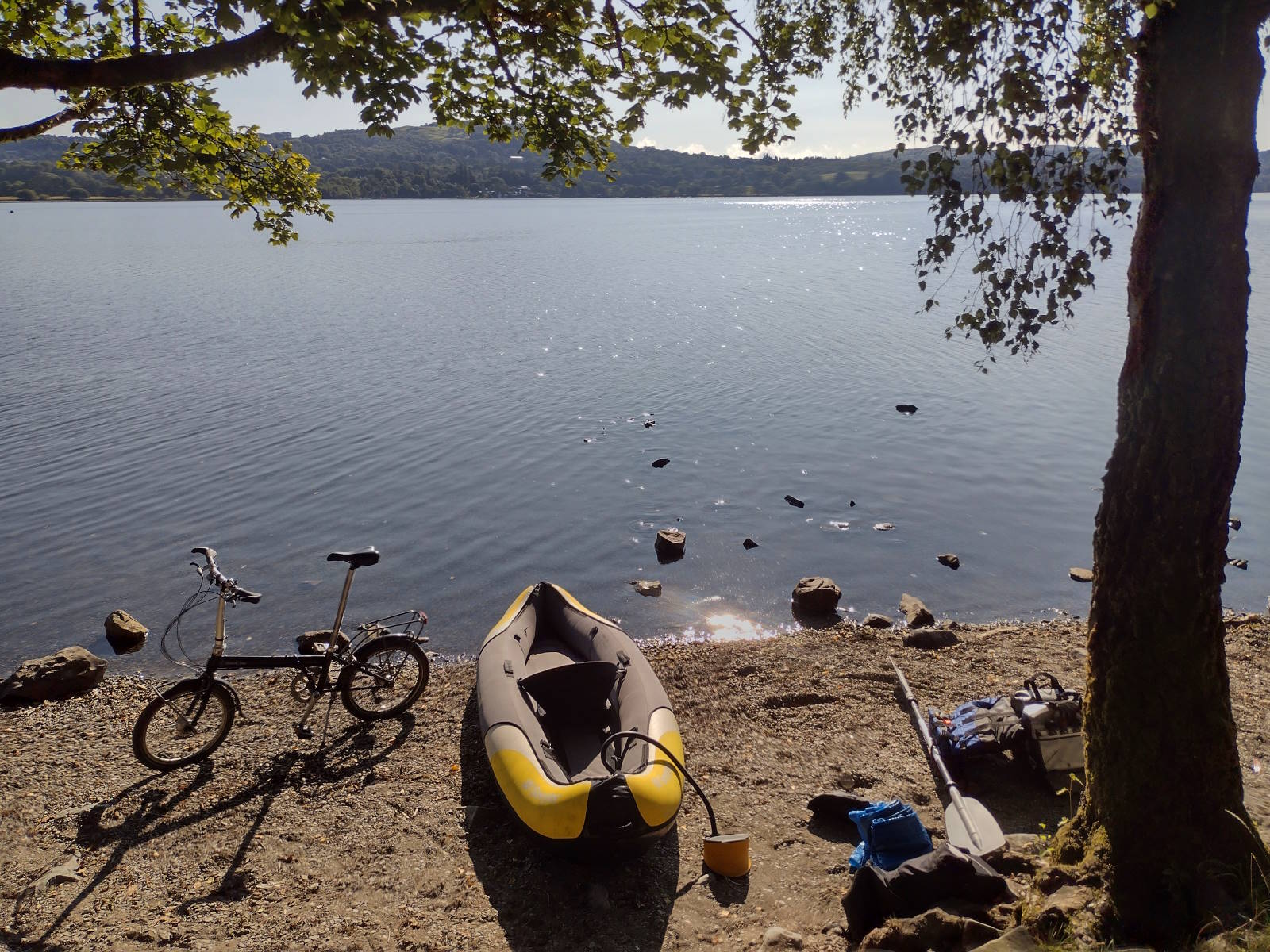
Inflating the boat is done with a bog-standard £8 footpump from Decathlon etc. It takes about twenty minutes of legwork to fill the boat’s three chambers (floor and two side-tubes), any one of which would keep you afloat if you were to suffer a puncture or two. Fortunately, it seems the chambers are more robust even than my folder’s thornproof, Kevlar-lined, flat-resistant tyres.

I lunched on one of Windermere’s islets, Lilies of the Valley. It was wonderful to have the whole lake to myself, except for the odd wild swimmer and waterskier, some windsurfers, a few dozen kayakers and canoeists, a hundred paddleboarders, and a thousand tourists in the sightseeing boats.
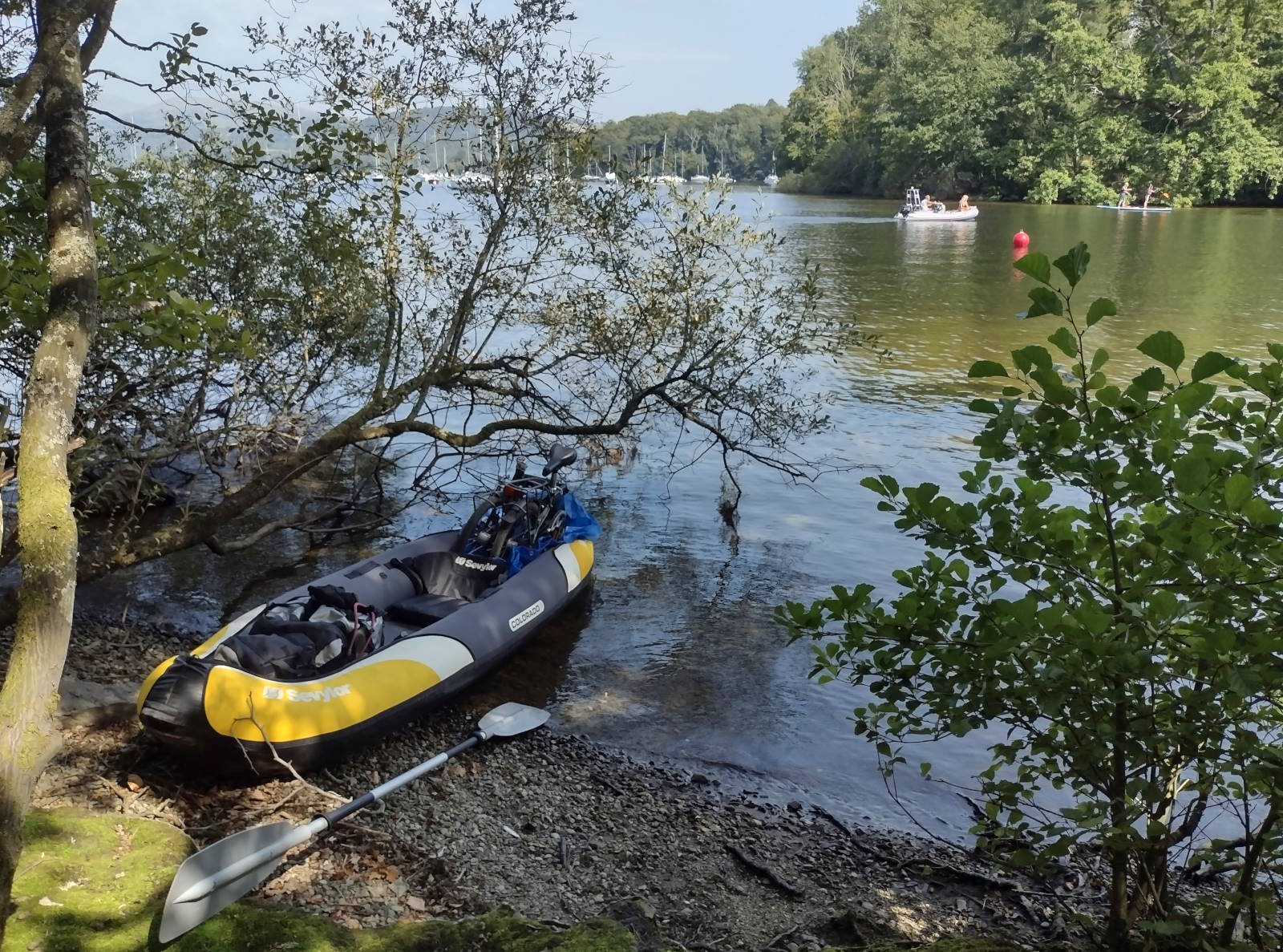
My accommodation for the first night was at Hawkshead’s hostel. It’s ideally situated: far enough away from the quaint village to lose the tourists, but near enough to nip there for a quick pint and stock up for dinner from the Co-op’s ‘reduced’ cabinet.
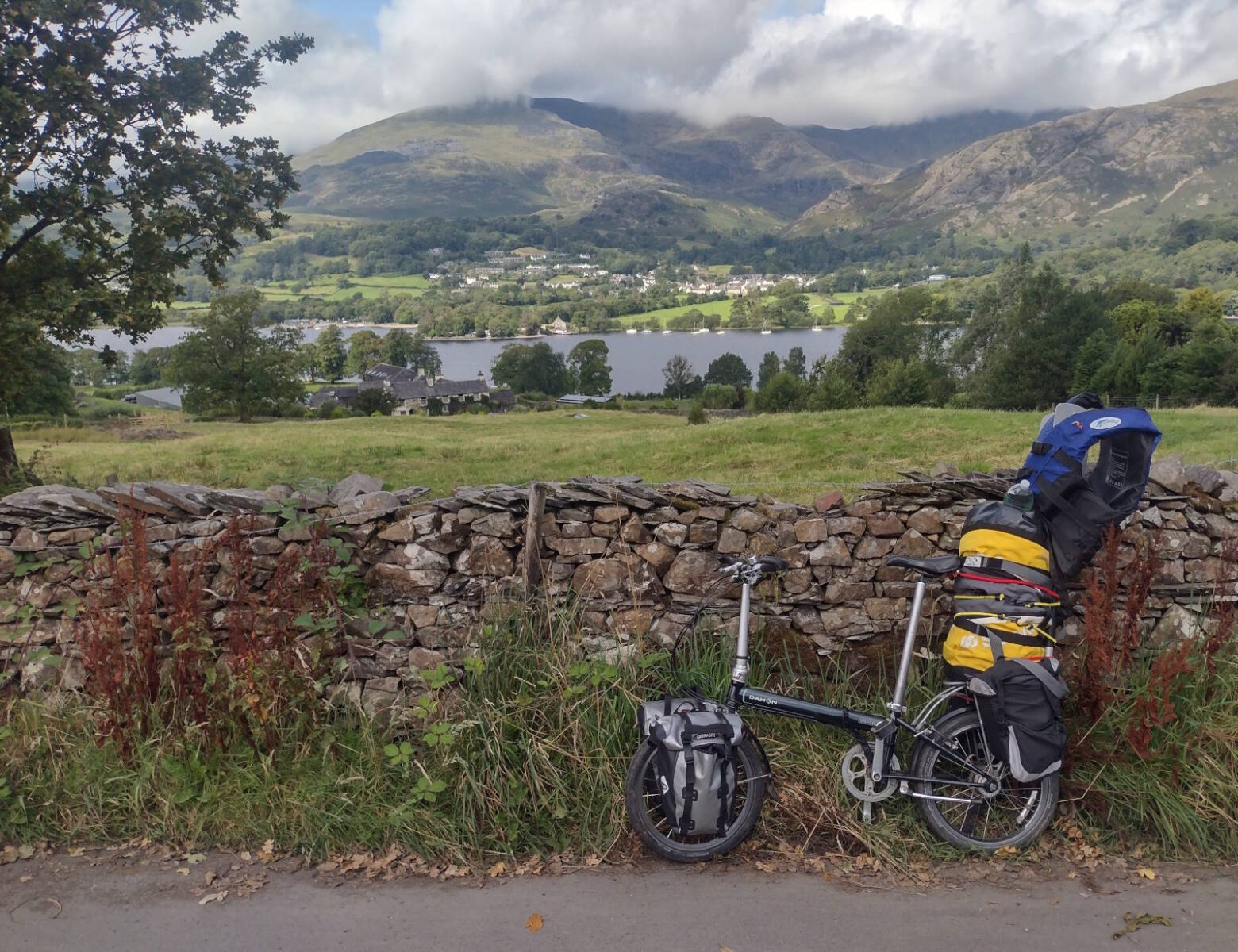
For Day 2 I rode up and over to neighbouring Coniston Water, and down south along the quiet lane that hugs its eastern shore. I wanted to paddle across to picnic on Peel Island, the model for ‘Wild Cat Island’ in Arthur Ransome’s Swallows and Amazons.
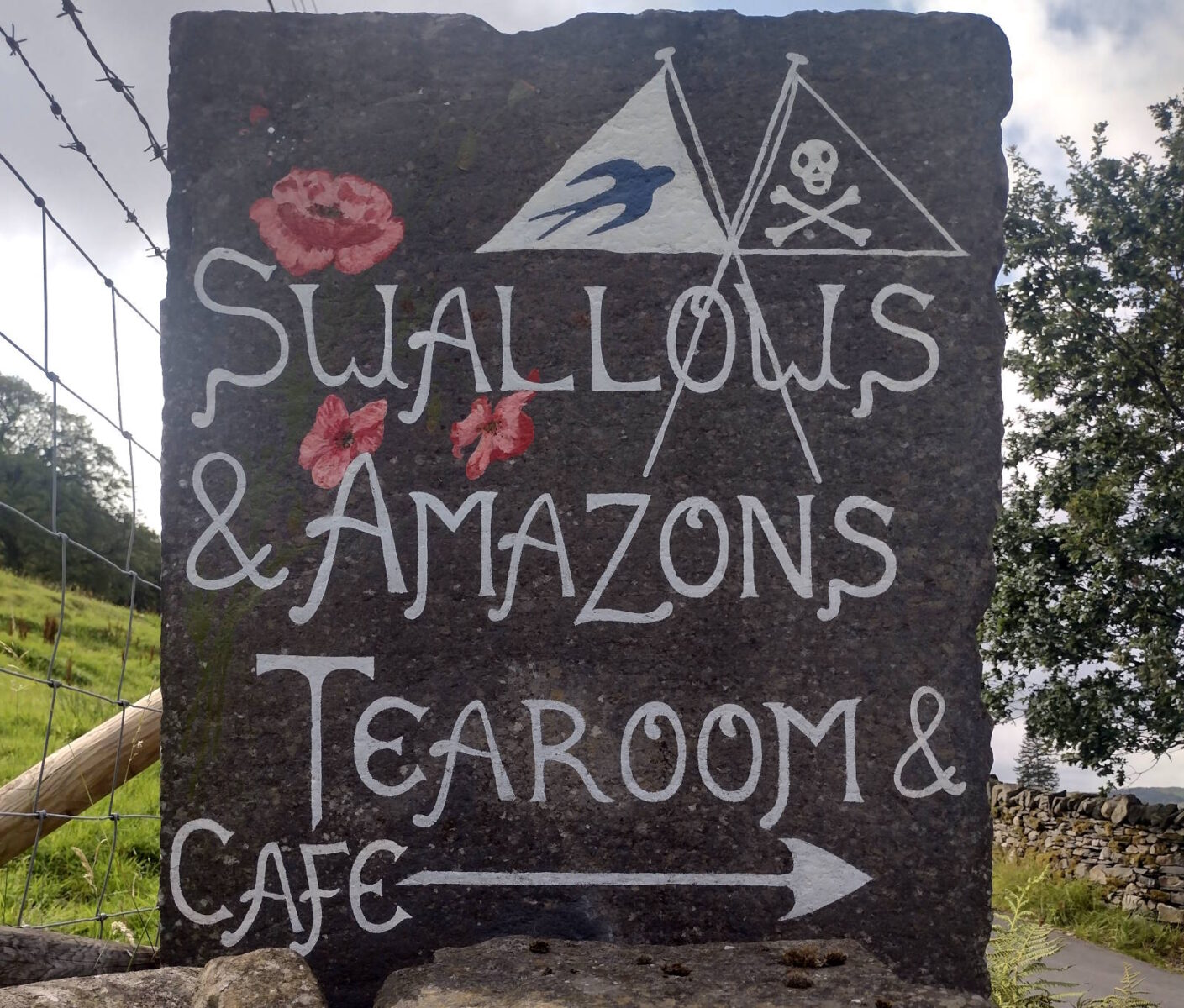
Again, I wasn’t alone, but I was the only person on the island with a bike. I could have unfolded it and ridden it round, except it’s impossible because of all the trees. There’s never a bike path when you want one.
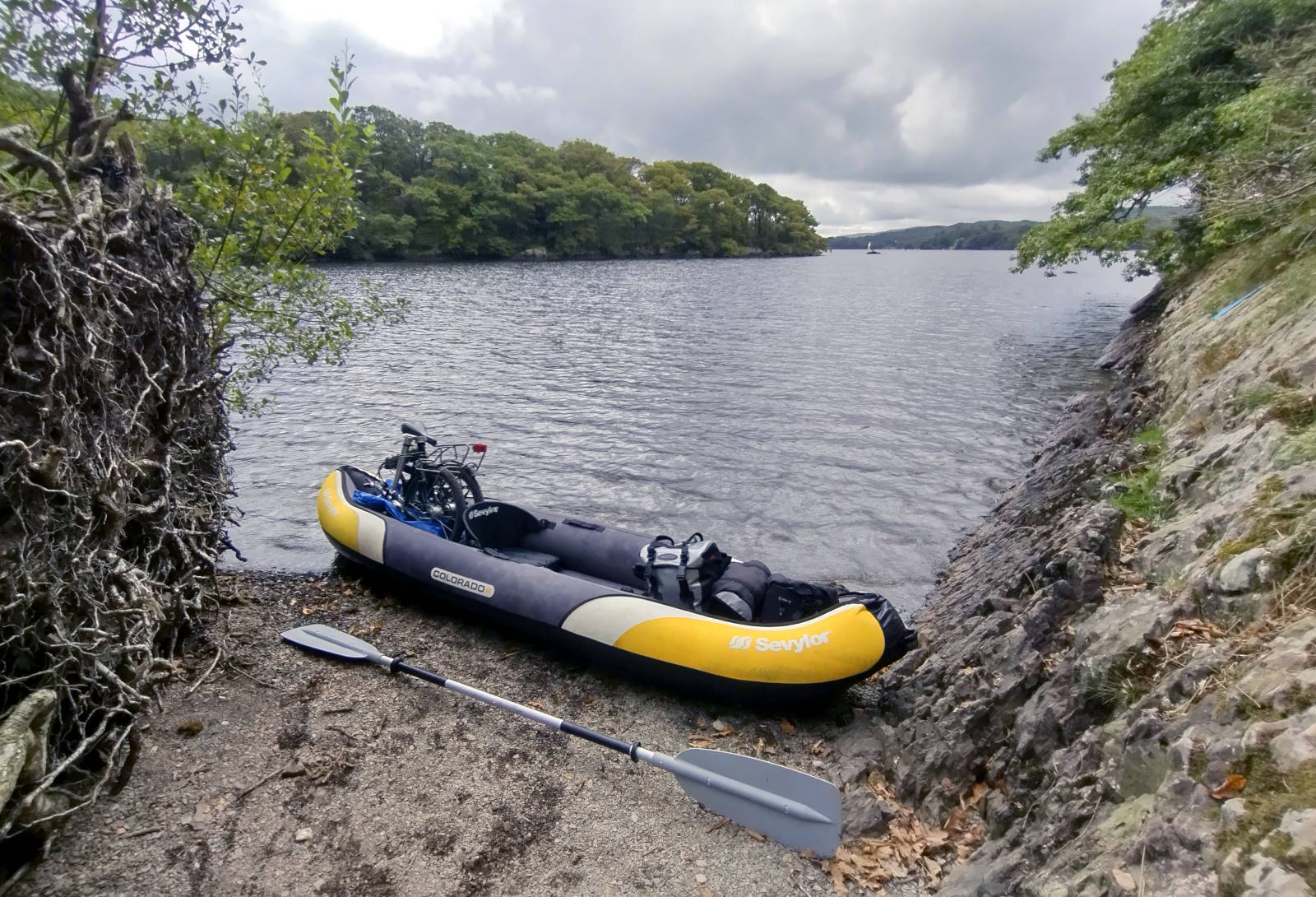
From Peel Island I paddled up the western shore to Coniston. Here another cut-price hostel awaited me, following a pricey but welcome pint of IPA in the Black Bull.
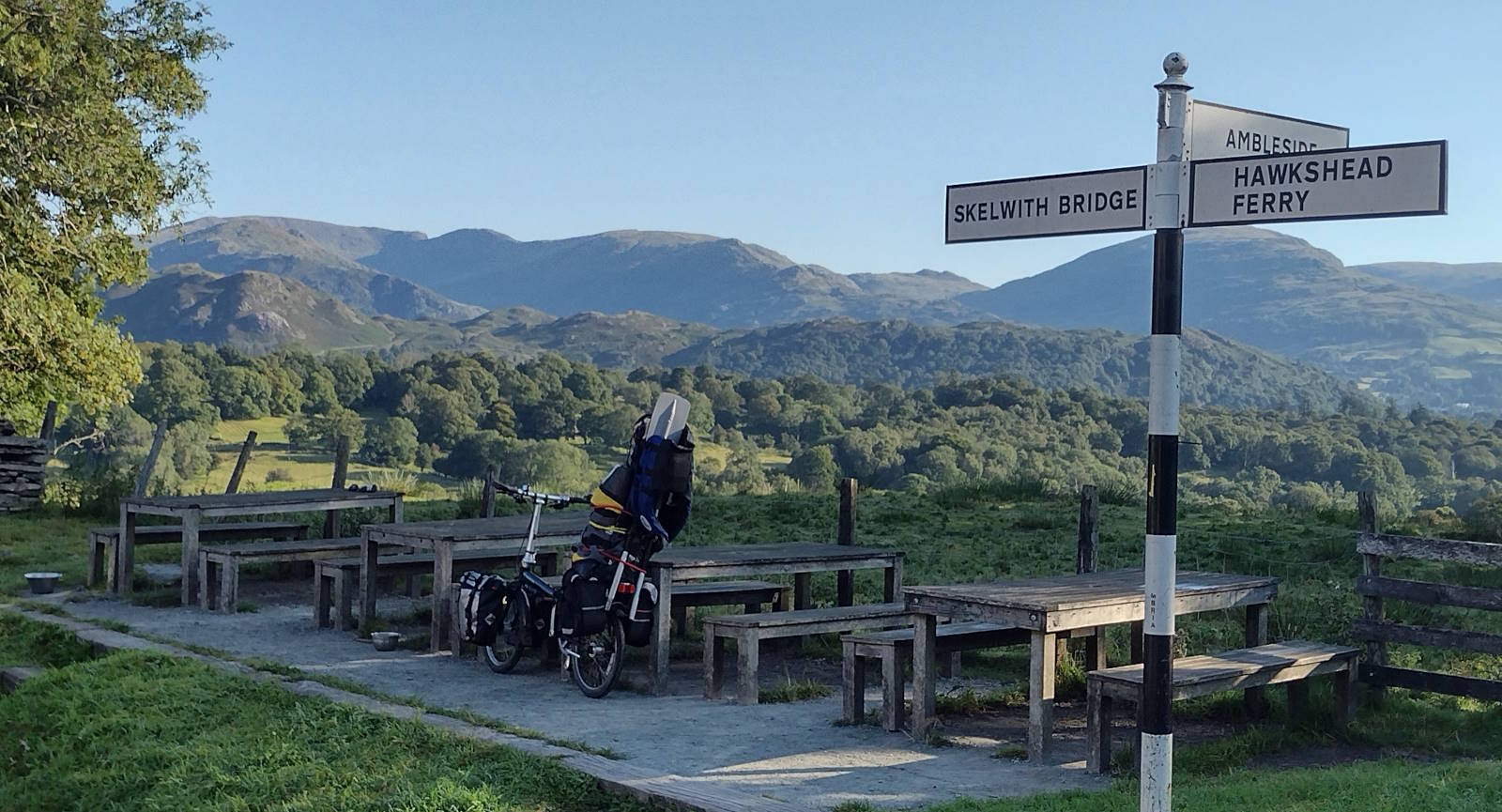
On Day 3 I head back up and over the hills to Windermere’s western shore – a thrilling and scenic delight, a long uphill followed by a long downhill. I put in the water again at Red Nab and paddled meanderingly across back to Millerground’s public boat beaches.
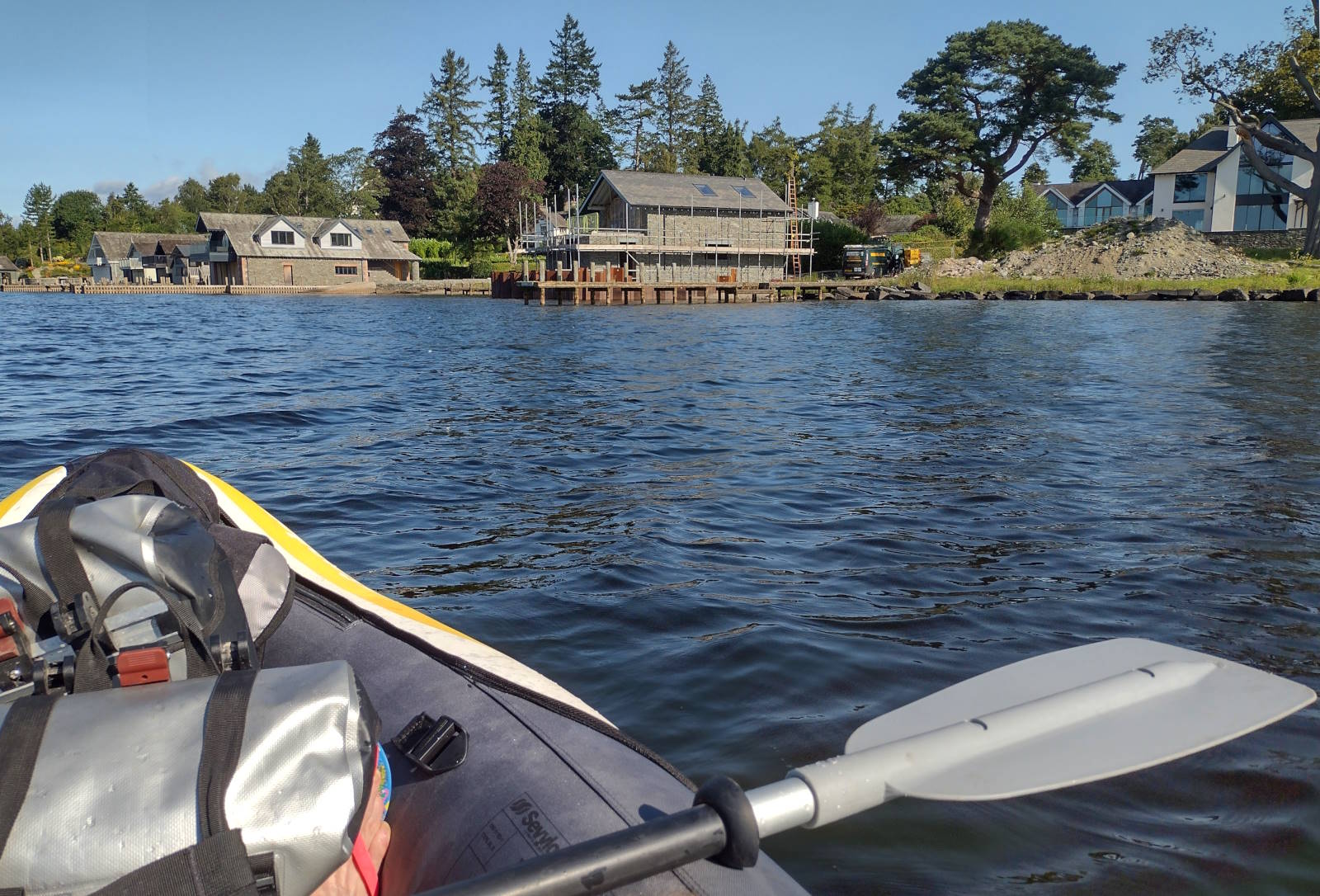
An important part of this inflatable-boat lark is drying the thing out when you leave the water. Damp boats rolled up and stored for weeks get mouldy and smelly, so I’m happy to spend a leisurely hour or two post-paddle letting the sun burn off all the moisture from the craft. Time to relax, chill out, watch the lake and the people on it, do sudokus etc. From there I slogged back up the hill to Windermere station for my afternoon train home.
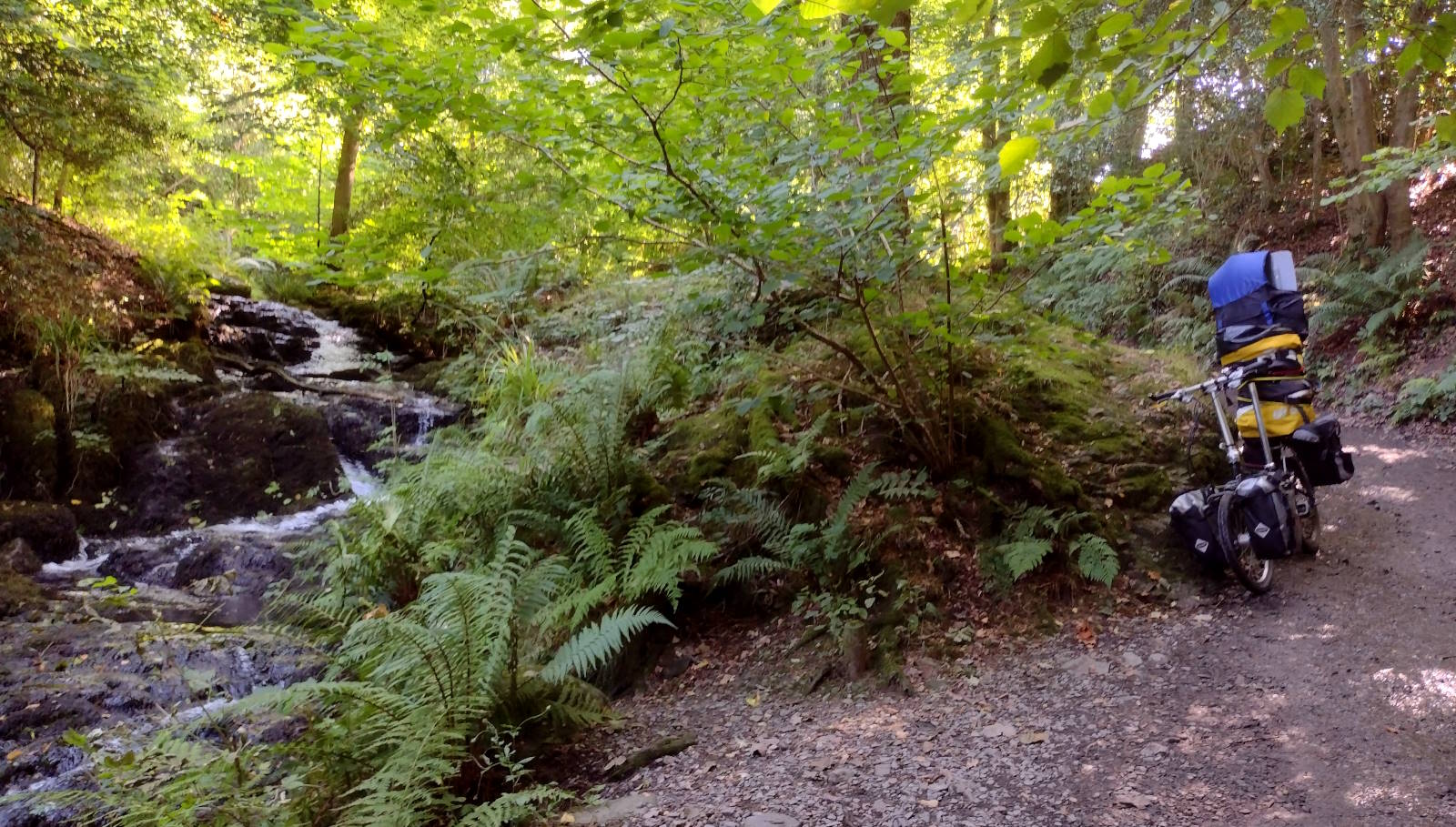
Amphibious touring, I’m learning, is not a fast process. It takes 30-45 minutes to go from unloading the folding bike at the water’s edge to paddling off. And after leaving the water, it’s an hour or more to dry the boat and pack up again.
And distances are not huge. I reckon a comfortable maximum distance for cycling with this setup is about twenty miles; less in hilly country such as this. And as for paddling, I wouldn’t risk more than four or five miles at most, for fear of overstretching my thin cyclist’s arms.
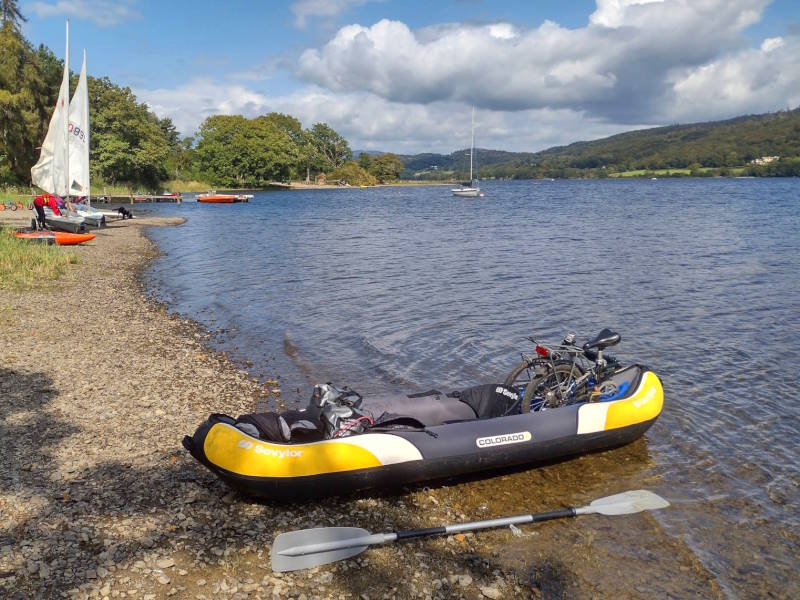
But that’s still plenty enough for a fabulous linear journey, as this little trip showed. I’m very happy with these experiments in Amphibious Cycling Touring.
What next? Some Scottish lakes with wildcamping perhaps, when the midges have shut up shop for winter? The Broads? A towpath cycling/canoeing river odyssey, perhaps down the Wye or Thames? Watch this space…